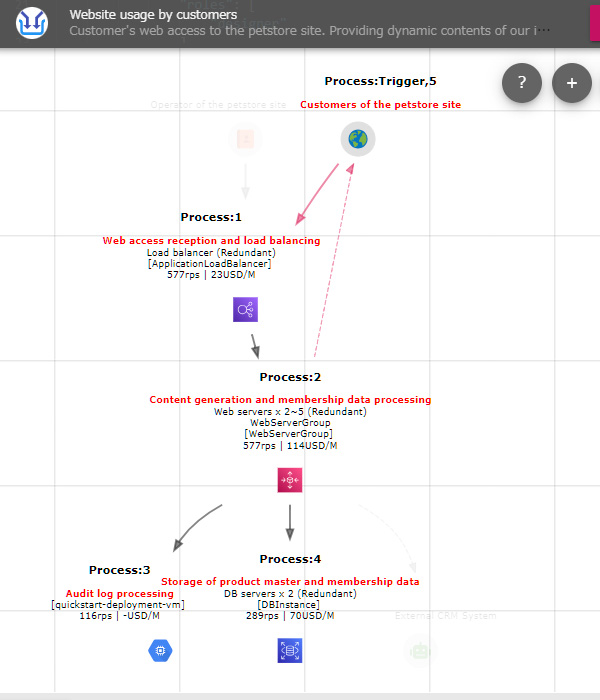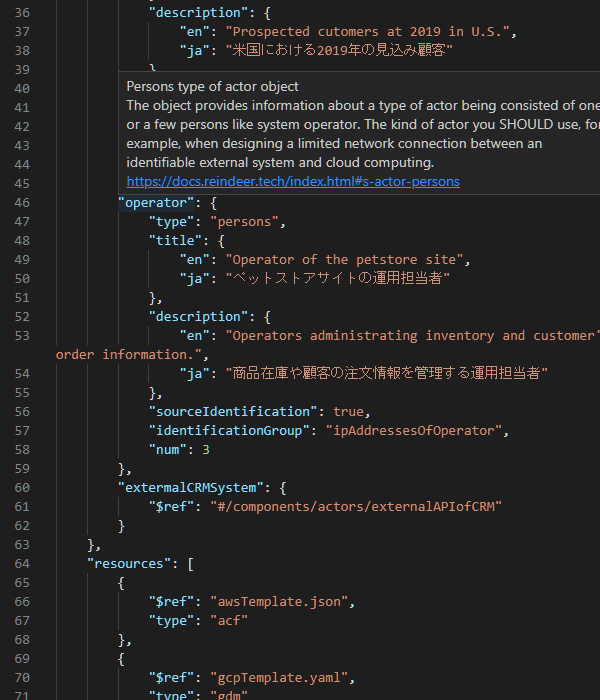Fork Me! reduces the risk of increased costs associated with the pre- and post-cloud design process (preparation, review, and reuse).
204 times
the cost by
back and forth process problems
確認不足
設計の準備に際してプロジェクトオーナーや企画者が、クラウドの利用要件を的確に指示できるとは限りません。
「いい感じの性能」や「普通のコスト」といった曖昧な要求を受け流してしまった場合、高負荷によるシステムダウンや予算超過でサービス影響が生じます。
また見積根拠や処理範囲など、前提条件の提示には労力がかかります。その労力を惜しむと、サービス影響の見逃しはもとより、問題発生時に責任の所在をめぐるトラブルにも発展します。
結果、それらを原因とした運用開始後の修正には、200倍のコスト※が必要になります。
※要件定義時のミスを、運用開始後に修正した場合のコストは200倍
アラン・M. デービス. ソフトウェア開発201の鉄則. 日経BP
アラン・M. デービス. ソフトウェア開発201の鉄則. 日経BP
資料過多
要件の確認やレビューで関係者と情報をやり取りする時、最初から必要な情報を見越して、資料を最適化するのは大変です。かといって必要のままに資料を用意した場合、似たような記述を繰り返す無駄や、細切れの補足資料で割り込み作業が生じます。
結果、要件定義フェーズのドキュメント生産性は、設計時に出せる生産性の34%※にとどまり、2.9倍のコストを生じることになります。
設計フェーズのドキュメント生産性は16.3、要件定義フェーズのドキュメント生産性は5.5
ユーザー企業ソフトウェアメトリックス調査2020年版.一般社団法人 日本情報システム・ユーザー協会
ユーザー企業ソフトウェアメトリックス調査2020年版.一般社団法人 日本情報システム・ユーザー協会
属人化
設計の情報を整理する際、他案件での情報流用まで考慮するのは大変です。
よってそれらは大抵、案件固有の情報として整理され、フォルダの奥にしまいこまれます。ともなって、案件を横断した情報のインデックスが限られた担当者の脳内にしか残らず、組織の学習が進みません。結果、生産性が人材採用の成否に大きく依存するため、全体平均の1.3倍※とされるIT人材の採用コストも高止まることとなります。
※全体の平均採用コストは674.1万円、IT・通信・インターネット業種の採用コストは895.5万円
マイナビ中途採用状況調査2020年版.株式会社マイナビ
マイナビ中途採用状況調査2020年版.株式会社マイナビ
問題解決の鍵は、型化
確認作業を型化
確認不足をなくすには、準備段階で使うヒアリング項目の整備、レビュー段階で使う前提条件を示す数値指標の整備が効果的です。
ヒアリングについては、あらかじめ決められた質問項目に沿うことで、担当者のスキルに依存した要件の聞き洩らしがなくなります。さらにそれらの項目がプロジェクトオーナーや企画者が答えやすい、あるいは設計者がフェルミ推定しやすい粒度に調整されていれば、不確実な内容があっても一定の水準で推測できるようになります。
また前提条件の提示については、あらかじめ決められた数値指標を用いることで、担当者のスキルに依存した説明不足が避けられます。さらにそれらが測定可能な数値であれば、
問題発生時にそれが責任を負うべき設計上の約束の範囲かどうかを、切り分けできるようになります。
資料作業を型化
無駄な資料を減らすには、資料フォーマットの整備が効果的です。
あらかじめ決められたフォーマットに従って資料を作成することで、担当者のスキルに依存した記載不足で追加資料が必要になったり、記載過多で無用な労力を費やすことがなくなります。またそのフォーマットが様々な用途に共通した情報を含むよう調整されていれば、用途別に似たような資料を生み出す無駄も避けられます。
情報管理を型化
貴重な設計情報を属人化せず横展開するには、情報を記録するデータ形式の整備が効果的です。
案件や担当者によるデータ形式のばらつきを回避することで、案件を横断した情報の検索、再利用が容易になります。
またその形式がJSON/YAMLといったコードであれば、特定ツールへの依存や図表等にともなう表現のゆらぎも抑制でき、情報の埋没が避けられます。
フォークミー!の型化機能が、その問題を解決します。
設計の前後工程(準備、レビュー、再利用)は重要
設計の前後工程を改善する効果は、コスト増大リスクの低減にとどまりません。開発者が持つ技術と生産性の真の能力を引き出し、品質と工期を最適化します。なぜなら、それら前後工程で余計な手探りや手戻りが発生しなければ、開発者が設計品質と工期を左右する技術タスクに、一層集中できるようになるからです。そして私たちは、クラウド技術が日々高度化する中、それらを効果的に利用する技術タスクへの集中も、一層重要になっていると考えています。
だからこそフォークミー!は設計前後工程の改善を支援することで、開発者の技術タスクへの集中を実現し、あなたのクラウド設計のレベルアップに貢献したいと考えています。



